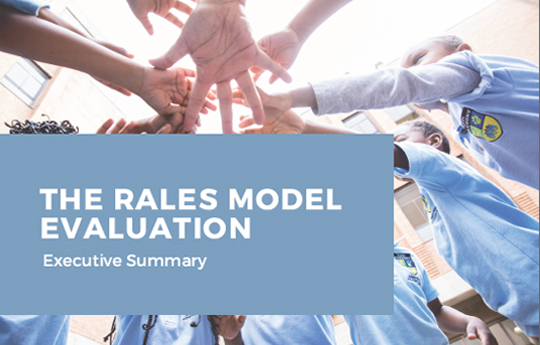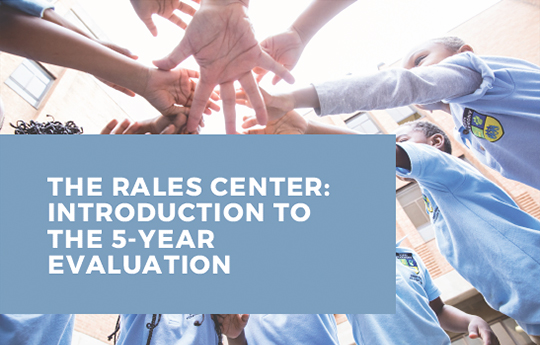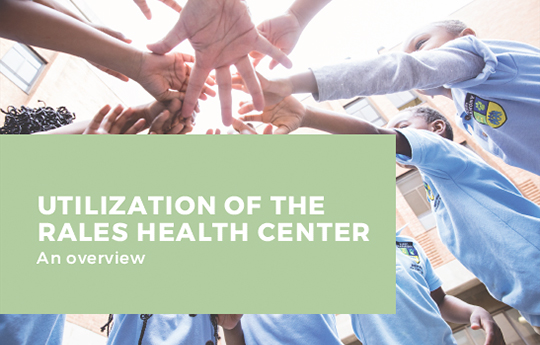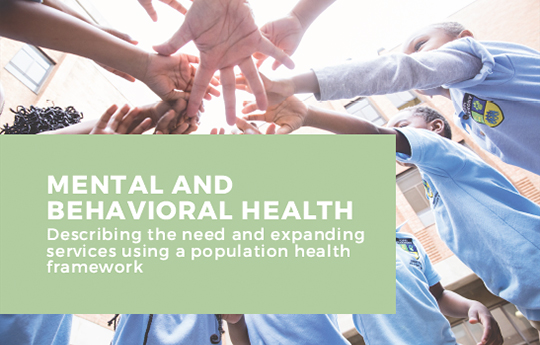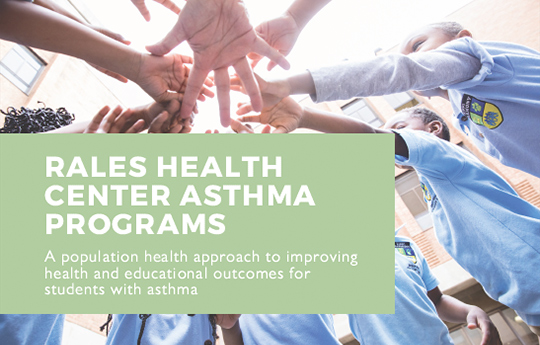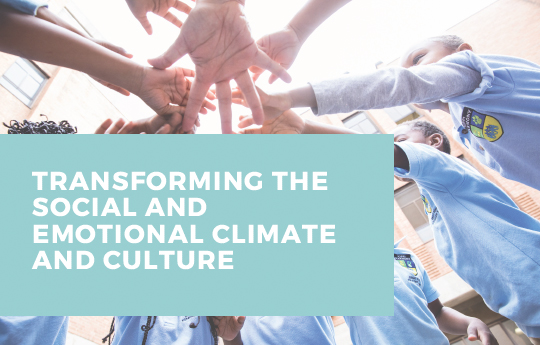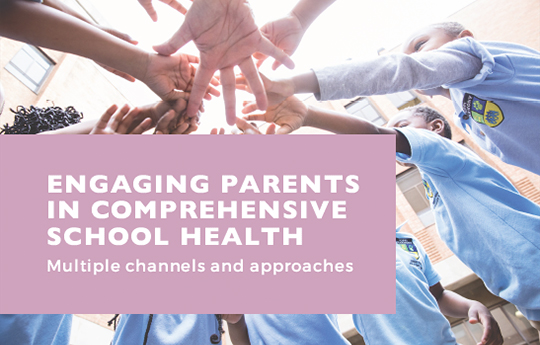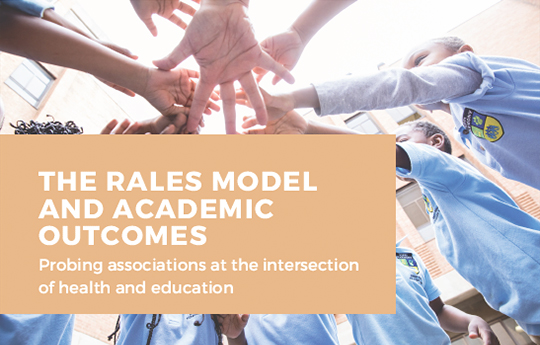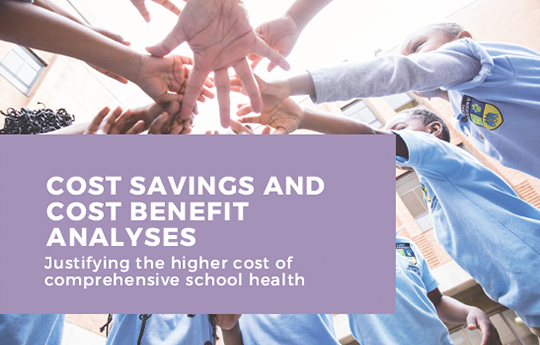The Rales Center is focused on evaluating the impact of its programs and advancing the science of school health. Center faculty, clinicians, trainees, educators, families, and community partners work together to better understand what works in school health, for whom, and how to make it work better. To date, we have shown that the Rales Health Center is associated with better student health and educational achievement, and that the Heath Center generates more than four dollars in net social benefit for every dollar invested.
Peer Reviewed Publications
- Smith BS, Johnson SB, Tschudy MM, Prichett L, Yousafzadeh N, Connor KA. Emergency department visits for mental and behavioral health disorders by students enrolled in a school-based health center. Families, Systems and Health. In press. [PMCID: n/a].
- Connor KA, Spin P, Smith BM, Marshall BR, Calderon GV, Prichett L, Jones VC, Connor R, Cheng TL, Klein LM, Johnson SB. Effect of a comprehensive school-based health center on academic growth in K-8th grade students. Acad Pediatr. 2024 Apr 6:S1876-2859(24)00116-5. doi: 10.1016/j.acap.2024.03.018. https://pubmed.ncbi.nlm.nih.gov/38588789/
- Klein LM, Johnson SB, Anderson AC, Beharry K, Faden R, Guo X, Kallem M, Nicklin A, Regenberg A, Tariq A, Collins ME. Predictors of student mask mandate policies in United States school districts during the COVID-19 pandemic. Front Public Health. 2023 Jul 31;11:1217638. doi: 10.3389/fpubh.2023.1217638. PMID: 37583885; PMCID: PMC10423804. https://doi.org/10.3389/fpubh.2023.1217638
- Suleman, S., Calderon Velazquez, G., Haag, T., Connor, R., & Marshall, B. (2023). Implementation of CDC guidelines for recess: a formative research study. Health promotion practice, 24(1), 81-91. https://journals.sagepub.com/doi/pdf/10.1177/15248399211036718
- Haag, T. M., Velazquez, G. C., Wiggins, T., Spin, P., Johnson, S. B., & Connor, K. A. (2020). An Intervention to Promote Adherence to Glasses Wearing Among Urban Public Elementary School Students: Associations With Classroom Behavior. The Journal of School Nursing, 1059840520963647.
https://journals.sagepub.com/doi/full/10.1177/1059840520963647 - Senter, J. P., Smith, B. M., Prichett, L. M., Connor, K. A., & Johnson, S. B. (2020). Pediatric asthma is associated with poorer three-year academic achievement in urban elementary and middle school students. Academic Pediatrics.
https://www.sciencedirect.com/science/article/pii/S1876285920305817 - Rabner M, Bissett K, Johnson SB, Connor KA. A risk stratification algorithm for asthma identification and prioritization in a low-income urban school. J Sch Health. 2020; 90:538-44.
https://onlinelibrary.wiley.com/doi/pdf/10.1111/josh.12903 - Cheng, T. L., Moon, M., & Artman, M. (2020). Shoring up the safety net for children in the COVID-19 pandemic. Pediatric research,88(3), 349-351.
https://www.nature.com/articles/s41390-020-1071-7 - Johnson, S. B., Spin, P., Connolly, F., Stein, M., Cheng, T. L., & Connor, K. (2019). Peer Reviewed: Asthma and Attendance in Urban Schools. Preventing chronic disease,16.
https://www.ncbi.nlm.nih.gov/pmc/articles/PMC6880919/ - Jones, V. C., Spin, P., Connor, K., Cheng, T. L., & Johnson, S. B. (2019). Are” No” and” No Thanks” the Same for School-based Health Center Enrollment?. Health Behavior & Policy Review,6(1).
https://www.ingentaconnect.com/content/psp/hbpr/2019/00000006/00000001/art00009 - Padula, W. V., Connor, K. A., Mueller, J. M., Hong, J. C., Velazquez, G. C., & Johnson, S. B. (2018). Cost benefit of comprehensive primary and preventive school-based health care. American journal of preventive medicine,54(1), 80-86.
https://www.sciencedirect.com/science/article/pii/S0749379717304804
Program Evaluation
The Rales Model is being rigorously evaluated. The evaluation has three goals: 1) to characterize the process of implementing comprehensive, coordinated school health, including lessons learned; 2) to characterize health status at KIPP Baltimore; and 3) to quantify the impact of the program on health and educational outcomes.
The results of the evaluation from years 1-4 (school years 2015-16 to 2018-19) are now available below.
Results indicate that a new model of fully-integrated school health, one that embodies the CDC’s WSCC model, can be successfully implemented in a large, urban school setting. We observed large and robust associations between health conditions and poorer school attendance and standardized test performance. The Rales Model was associated with high utilization, better identification of students at health and social risk, and better medication adherence among students with chronic conditions. Moreover, enrollment in the Rales Health Center was associated with marked decreases in chronic absenteeism among students with chronic conditions as well as modest but meaningful improvements in standardized test score growth over time, particularly in math.
To learn more about the impact of the model on health and educational outcomes, click on a report below. The Executive Summary provides an overview of findings, while initiative-specific reports provide additional details about the process of implementation and lessons learned that can inform scaling in other settings.
Mental and Behavioral Health
Describing the need to expanding services using a population health framework.
DownloadRales Health Center Asthma Programs
A population health approach to improving health and educational outcomes for students with asthma.
DownloadThe Rales Model and Academic Outcomes
Probing associations at the intersection of health and education.
DownloadCost Savings and Cost Benefit Analysis
Justifying the higher cost of comprehensive school health.
Download
